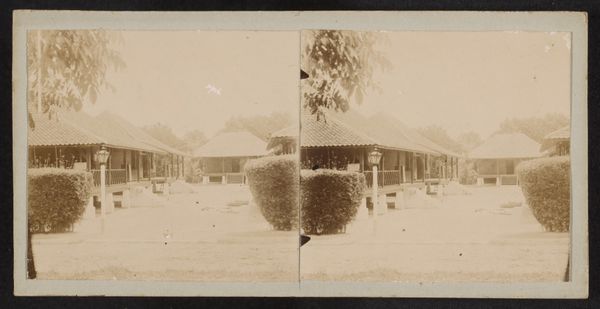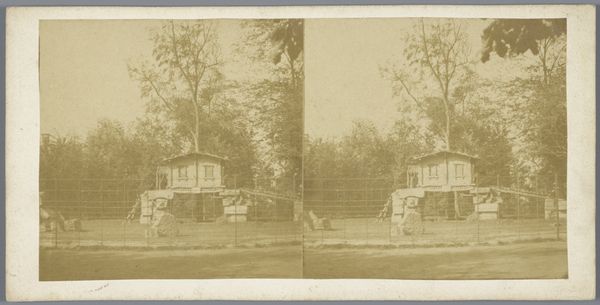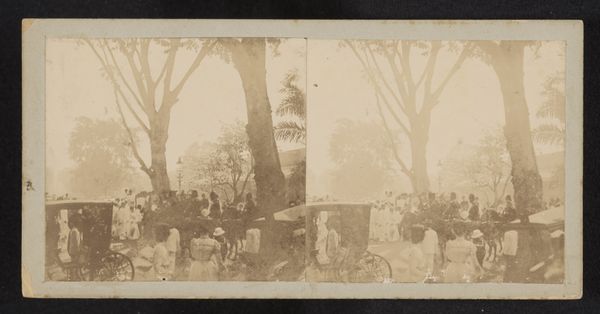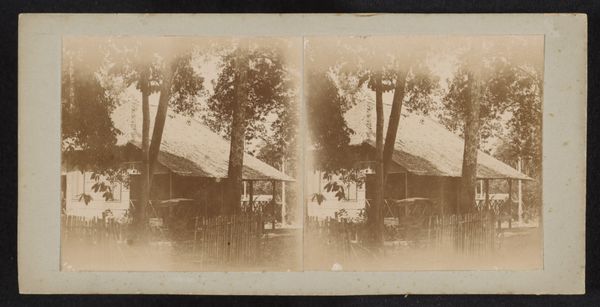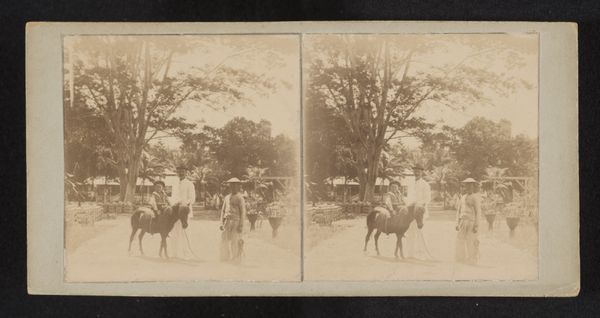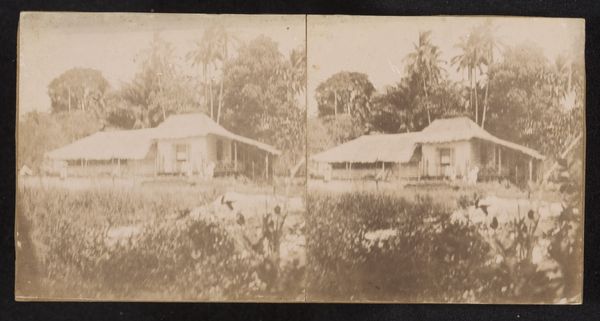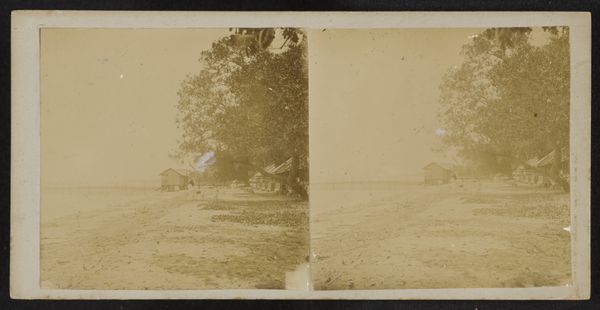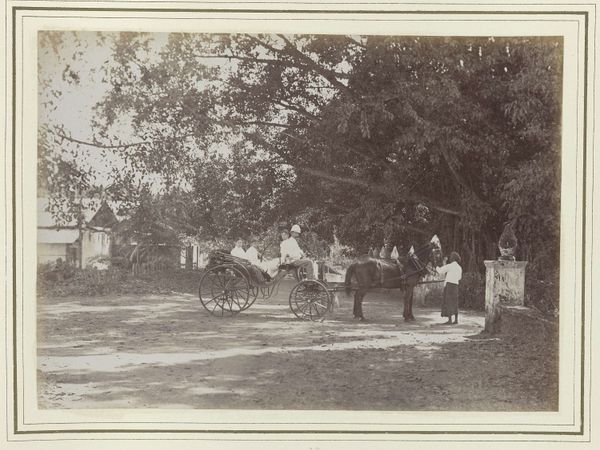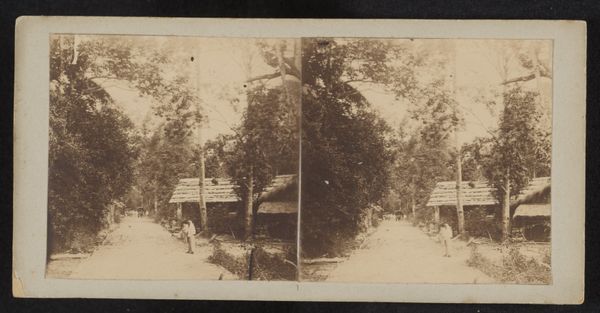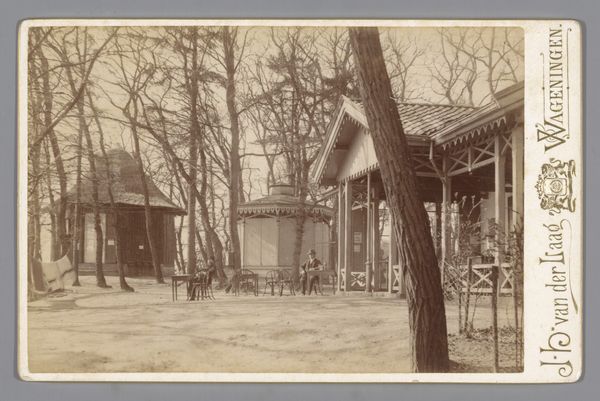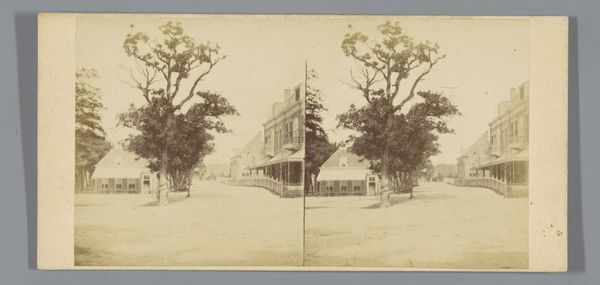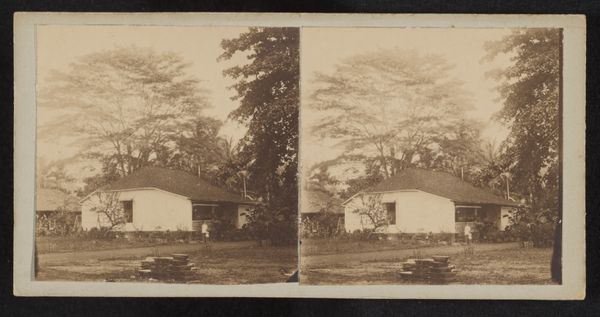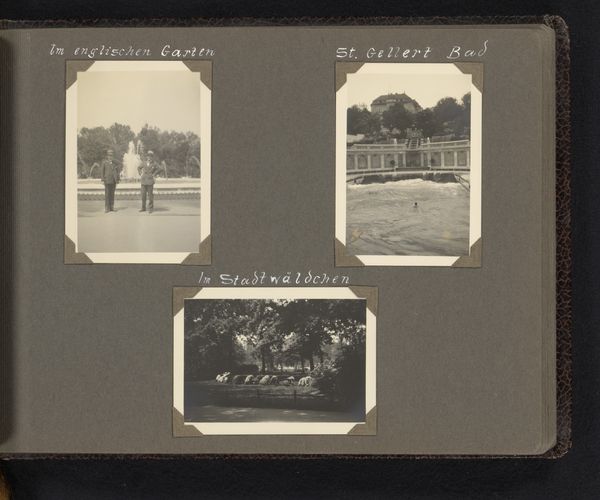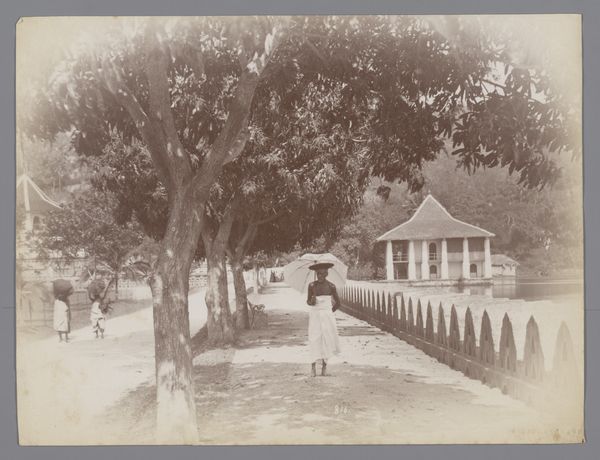
Dimensions: height 77 mm, width 76 mm, height 88 mm, width 178 mm
Copyright: Rijks Museum: Open Domain
Curator: Immediately, this photograph exudes a quiet domesticity. There’s something very dreamlike and soft about the image overall. Editor: We are looking at Robert Julius Boers' photograph titled "Huis en tuin van de ingenieur" - roughly translated, "House and garden of the engineer". Dating to sometime between 1900 and 1922, this gelatin-silver print exemplifies pictorialism. Curator: Pictorialism is certainly evident here. That soft focus and the careful composition, framing the house through the trees… it almost feels like a painting. This piece appears to exemplify "plein-air," judging from the subject. How interesting that photography was used to capture this "impressionistic" or pastoral "en plain air" style, but then we also have evidence the photograph itself has become a commodity of art. Editor: Right, pictorialism as a movement was so invested in asserting photography's artistic merit. We have Boers here blurring the lines between painting and photography, a rebellion against the idea of the photograph as a mere document. We see how that tension is playing out, the soft image with that somewhat gritty materiality. Curator: And the house itself becomes a fascinating subject through that historical lens. An engineer's home! It's indicative of the rise of a particular class, a professional class, during that era. Their domestic space becomes a stage for projecting status and modernity. Editor: Absolutely. And who were these engineers? What projects were they involved in? Consider the implications of technological progress alongside artistic representation of leisure and domestic life for an elite class. This makes me consider other works by Boers during that same time period, asking about which communities benefited from, and which suffered under, these technologies, policies, or programs. What were Boers' own assumptions in that setting, and whose labor subsidized this “rest”? Curator: You've added interesting questions, certainly pushing toward discomfort in this viewing experience. Considering it through a lens of historical impact helps expose biases within seemingly mundane artwork. I have considered the implications through aesthetic accomplishment. I wonder if it challenges our preconceptions about the era. Editor: For me, it highlights the persistent need to contextualize art, to not shy away from those more challenging narratives. Curator: Indeed. This piece encourages such thoughtful reflection, doesn't it? I initially appreciated its delicate aesthetic, and now it provokes deeper considerations.
Comments
No comments
Be the first to comment and join the conversation on the ultimate creative platform.
